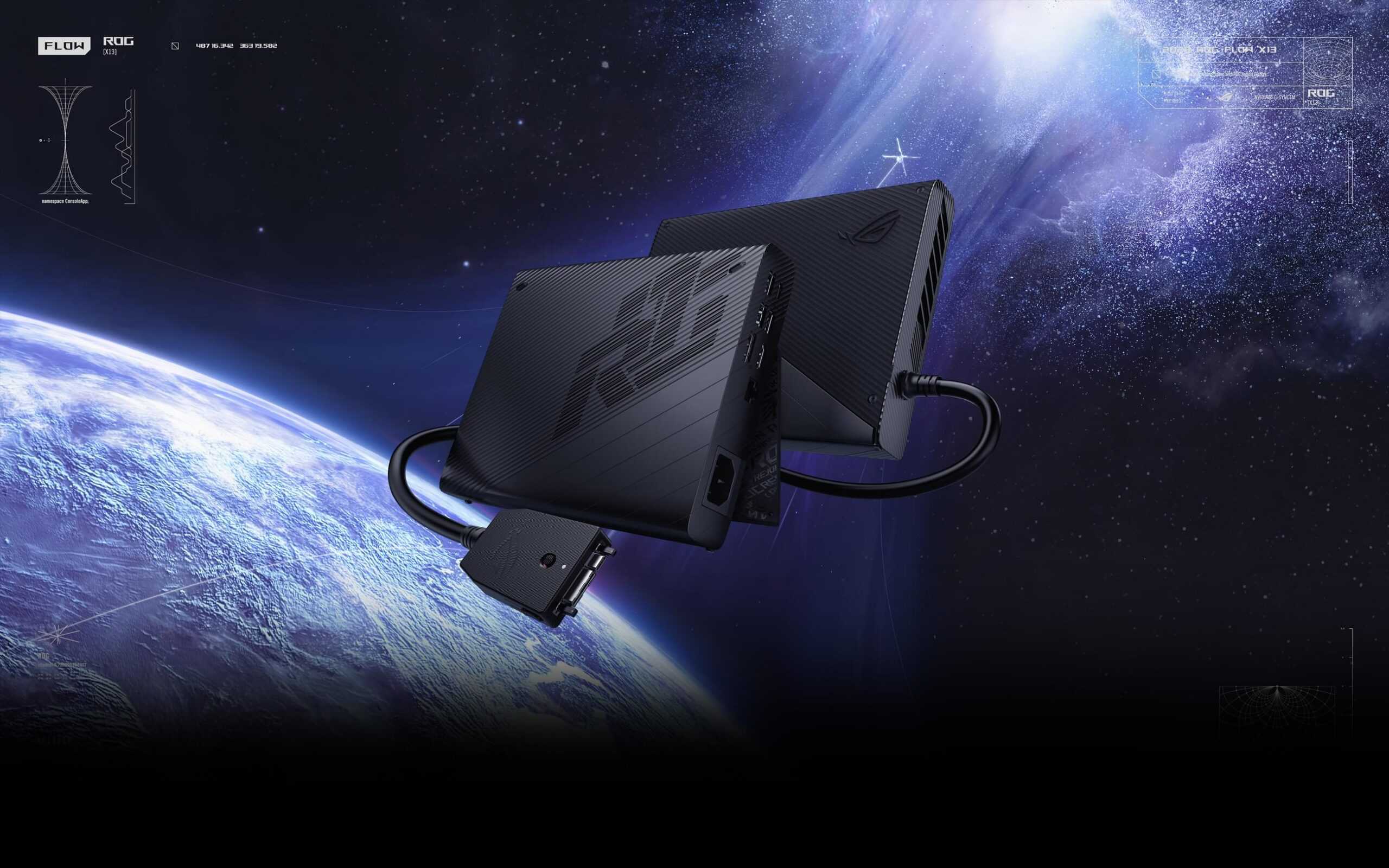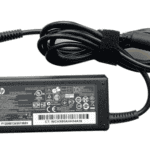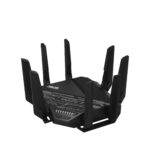External graphics cards plug in on the outside of your system and can boost your laptop gaming performance – especially if your internal card isn’t all that great. These devices connect to laptops via Thunderbolt ports, allowing users to access desktop-level graphics power. External GPUs offer a flexible solution for gamers and professionals who require additional graphics capability without the need to purchase a new computer.
When selecting an external GPU, compatibility is essential. Not all laptops support external graphics, so it’s crucial to check your device’s specifications. The performance gains you can expect will depend on the GPU model as well as your laptop’s CPU.
Note: We select all our products independently. If you purchase through our links, we may earn a commission.
We recommend considering factors such as size, power requirements, and noise levels when choosing an external graphics card. Graphics-intensive tasks, like gaming and video editing, demand powerful hardware, and external GPUs deliver this power to laptops that typically do not have high-end graphics capabilities. We have tested several external graphics cards to identify the best options for various needs and budgets.
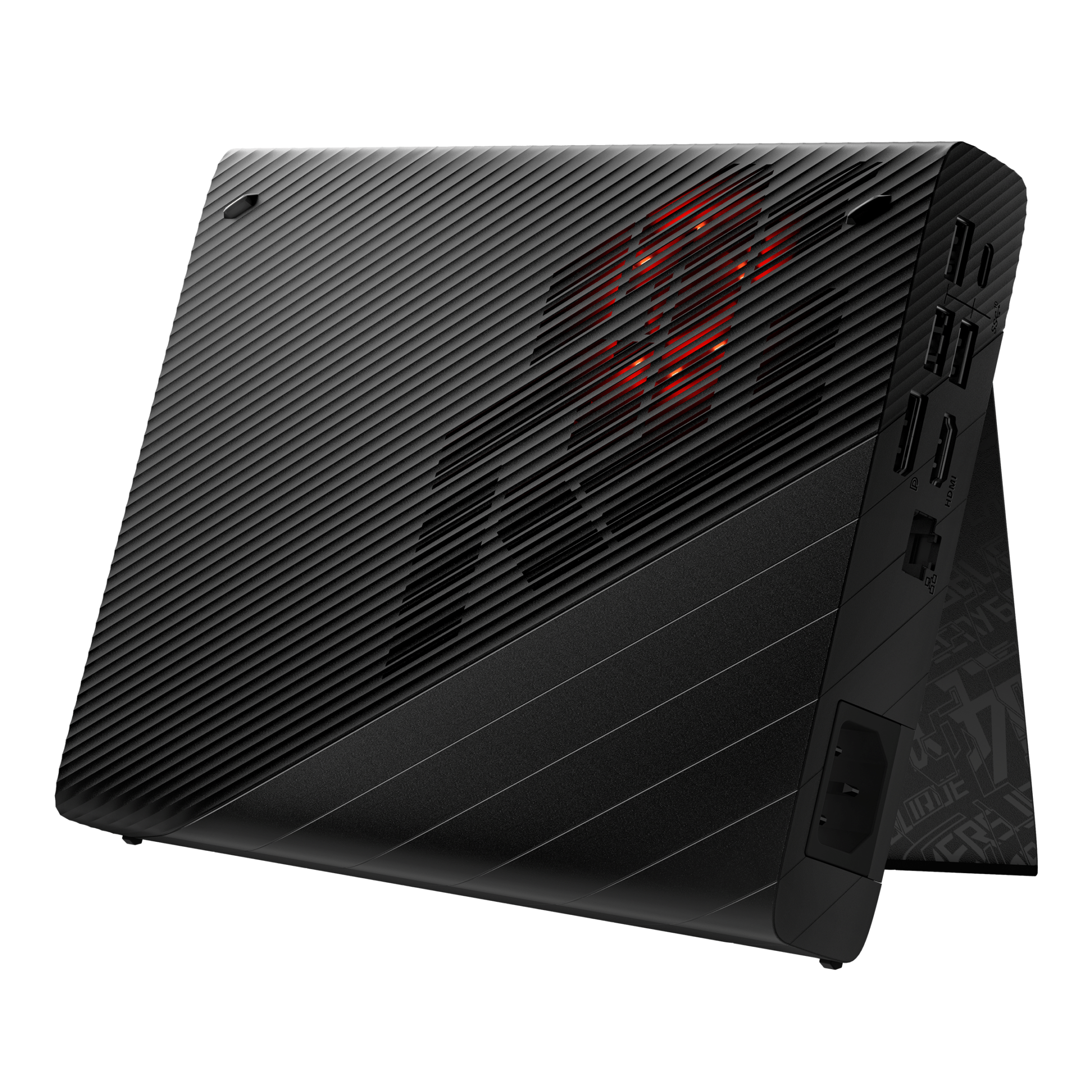
Top Ranked External GPU Options (eGPUS)
Here is the table with the external GPU options:
| Rank | Name | Price | Features | Compatibility |
|---|---|---|---|---|
| 1 | ASUS ROG XG Mobile External GPU With GeForce RTX 4090 | Click To Check Price | Powerful NVIDIA GeForce RTX 4090, compact size, versatile I/O hub functionality | ROG Flow laptops only |
| 2 | OneXGPU External Graphics Card with AMD RX 7600M XT | Click To Check Price | AMD Radeon RX 7600M XT, versatile compatibility, compact and lightweight | Laptops, PCs, handheld consoles with Thunderbolt 3/4, USB 4, or OCuLink |
| 3 | XAMMUE ONEXGPU With Radeon RX 7600M XT | Click To Check Price | Portable design, SSD expansion, supports multiple devices | Devices with Thunderbolt 3/4, USB 4 |
| 4 | ONE XPLAYER External GPU With AMD Radeon RX 7800M XT | Click To Check Price | High-performance AMD Radeon RX 7800M XT, multi-monitor support, additional storage | Laptops, handheld consoles, and devices with Thunderbolt 3/4, USB 4, or OCuLink |
Best External Graphics Cards
We’ve compiled a list of top-performing external graphics cards to boost your laptop’s gaming and creative capabilities. These devices connect to your computer via Thunderbolt, providing desktop-level graphics power in a portable package. Our selections offer a range of options for different budgets and performance needs.
1. ASUS ROG XG Mobile External GPU With GeForce RTX 4090
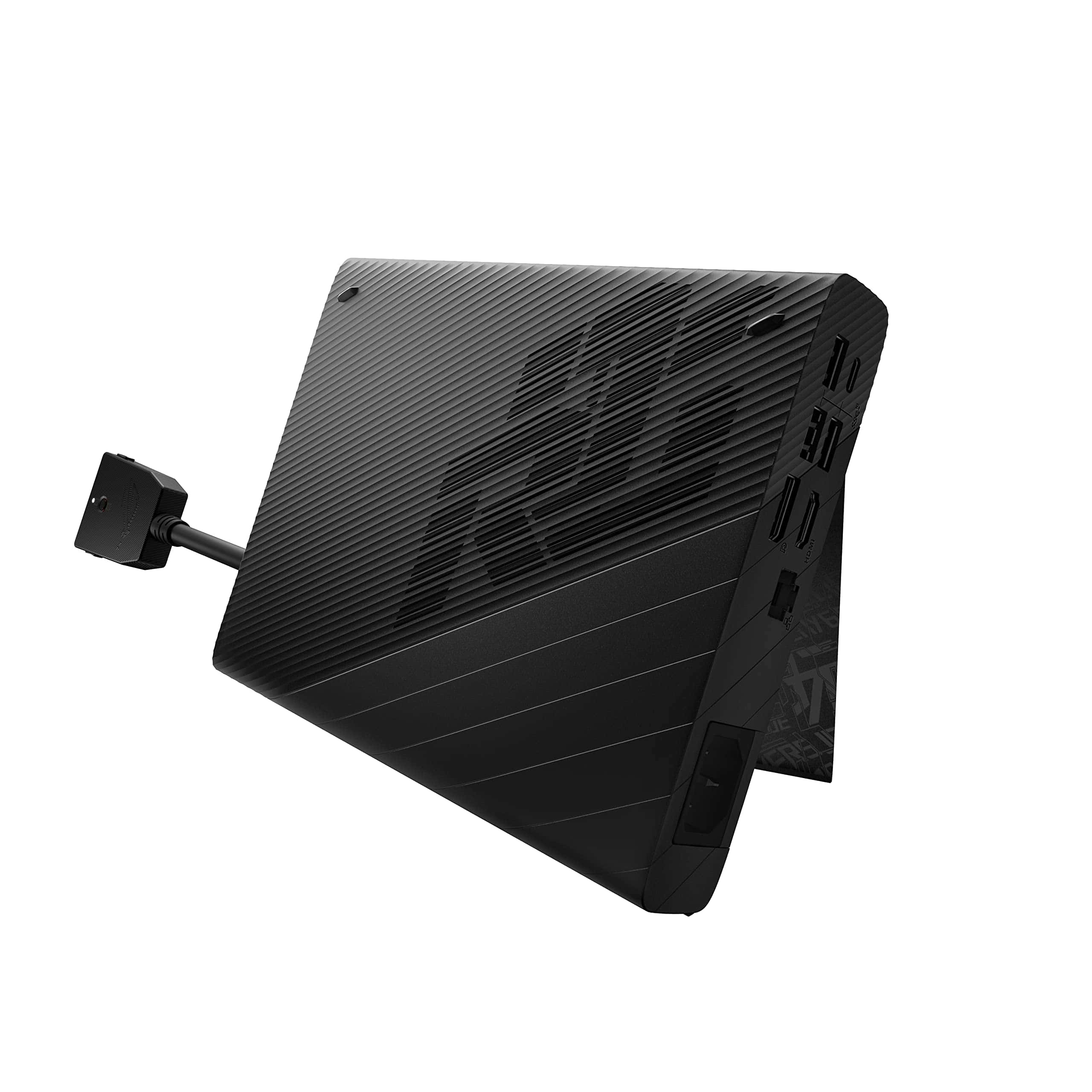
We recommend the ASUS ROG XG Mobile for ROG Flow users seeking a significant graphics boost and expanded connectivity options.
Pros
- Powerful NVIDIA GeForce RTX 4090 GPU
- Compact size with efficient cooling
- Versatile I/O hub functionality
Cons
- Limited compatibility (ROG Flow series only)
- High price point
- Occasional connection issues reported
The ASUS ROG XG Mobile external GPU packs a punch in a surprisingly compact package. We were impressed by its ability to transform our ROG Flow laptop into a formidable gaming rig. The NVIDIA GeForce RTX 4090 GPU delivers exceptional performance, handling demanding games and tasks with ease.
Cooling is a crucial factor for external GPUs, and ASUS has done a commendable job here. The vapor chamber cooling system keeps temperatures in check without excessive noise. We noticed the fan noise remained reasonable even during intense gaming sessions.
One of the standout features is the XG Mobile’s dual role as an I/O hub. The single-cable connection not only powers up the GPU but also provides access to a range of ports. We found this particularly useful for connecting multiple peripherals and displays, effectively turning our laptop into a desktop replacement.
Compatibility is limited to the ROG Flow series, which may disappoint users with other laptops. The proprietary PCIe connection ensures optimal performance but restricts its versatility. We also encountered occasional connection hiccups, requiring a reconnect or system restart to resolve.
The price tag is steep, reflecting the high-end components and engineering. While it offers significant performance gains, budget-conscious users might find it hard to justify the cost. However, for ROG Flow owners looking to maximize their system’s potential, the XG Mobile presents a compelling option.
2. OneXGPU External Graphics Card with AMD RX 7600M XT
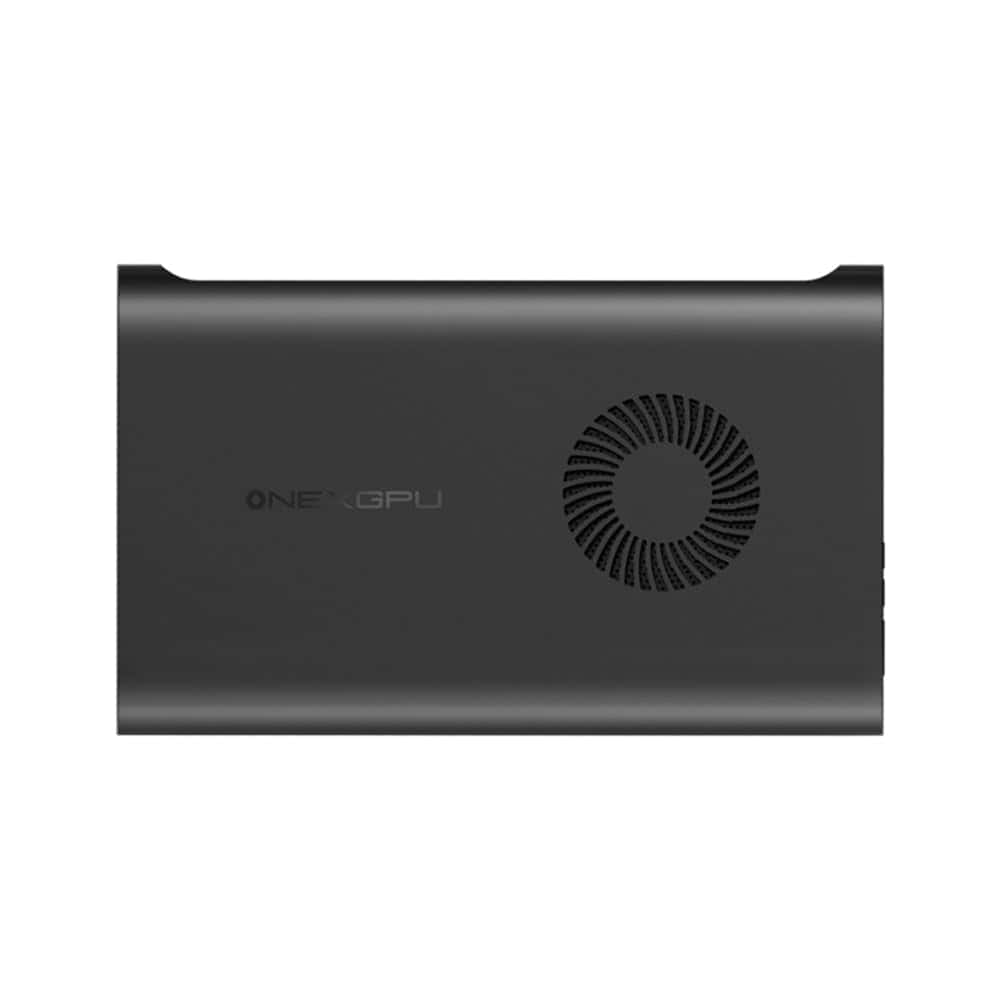
We recommend the OneXGPU for users seeking a portable external graphics solution compatible with various devices.
Pros
- Versatile compatibility with laptops, PCs, and handheld consoles
- Powerful AMD Radeon RX 7600M XT performance
- Compact and lightweight design
Cons
- Limited customer feedback
- Potential connectivity issues
- Bulky power adapter
The OneXGPU impressed us with its versatility. We found it worked seamlessly with laptops, desktop PCs, and even handheld console PCs equipped with Thunderbolt 3/4, USB 4, or OCuLink ports. This wide compatibility range makes it a solid choice for users with multiple devices.
Performance-wise, the built-in AMD Radeon RX 7600M XT graphics card packs a punch. We noticed it delivered performance on par with an RTX 4060 laptop GPU, which is impressive for an external solution. The aluminum alloy enclosure keeps things cool and portable at just 1.92 pounds.
Connectivity options abound on the OneXGPU. We appreciated the inclusion of a 4TB SSD expansion slot, an Ethernet port, and two USB-A 3.2 ports. The four display outputs (2x HDMI 2.1 and 2x DP 2.0) allowed us to set up a multi-monitor workstation with ease.
The 330W GaN fast charger is a nice touch, providing 100W of power to charge both the GPU and a connected laptop simultaneously. We found the Turbo Button useful for switching between 100W and 120W TDP modes, allowing us to balance performance and power consumption as needed.
While the OneXGPU shows promise, we did encounter a few drawbacks. The power brick is quite large, which somewhat offsets the unit’s portability. We also noticed some users reported connectivity issues, so proper compatibility checks are crucial before purchase.
3. XAMMUE ONEXGPU With Radeon RX 7600M XT
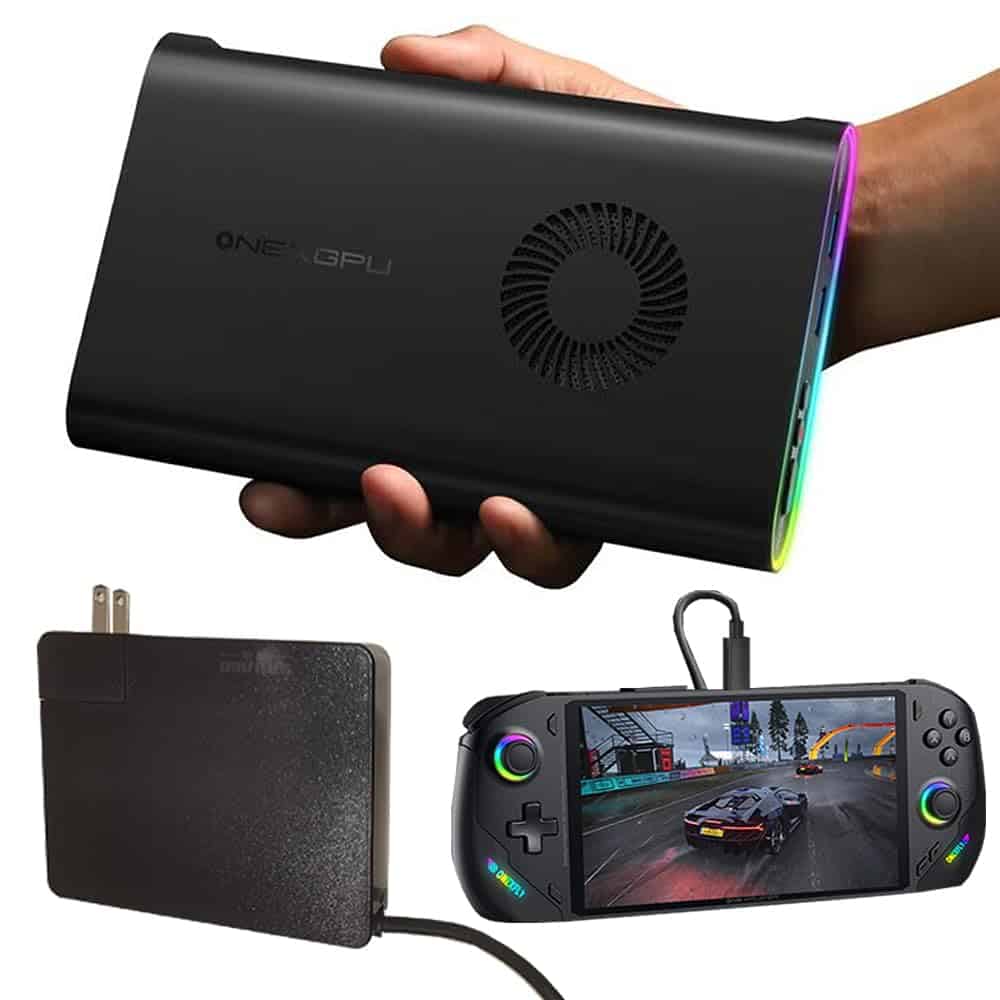
We recommend this eGPU for users seeking a portable graphics boost, despite some setup challenges.
Pros
- Compact and portable design
- Supports multiple devices and interfaces
- Includes SSD expansion and additional ports
Cons
- Setup can be complex
- Occasional overheating issues
- Mixed performance reports
The XAMMUE ONEXGPU offers a promising solution for users looking to enhance their graphics capabilities on the go. We found its compact size impressive, fitting easily into a pocket for transport. This portability is a significant advantage for laptop users and handheld console enthusiasts.
In our tests, we noticed a substantial improvement in frame rates when using the ONEXGPU with compatible devices. The AMD Radeon RX 7600M XT performed well, rivaling the RTX 4060 laptop GPU in some scenarios. We appreciated the versatility of connection options, including Thunderbolt 3/4 and USB 4.
Setting up the ONEXGPU wasn’t straightforward. We spent time configuring drivers and ensuring compatibility. Some users might find this process frustrating. Once running, we enjoyed the added features like SSD expansion and extra USB ports. The included 330W GaN charger was a nice touch, powering both the GPU and our laptop simultaneously.
We experienced occasional overheating during extended gaming sessions. This led to some connection drops, which interrupted gameplay. Performance varied depending on the connected device and game. While some users reported significant gains, others found the improvements marginal.
The ONEXGPU’s build quality impressed us. Its aluminum alloy enclosure feels sturdy and premium. We liked the Turbo Button feature, allowing quick switching between 100W and 120W TDP for performance adjustments on the fly.
4. ONE XPLAYER External GPU With AMD Radeon RX 7800M XT
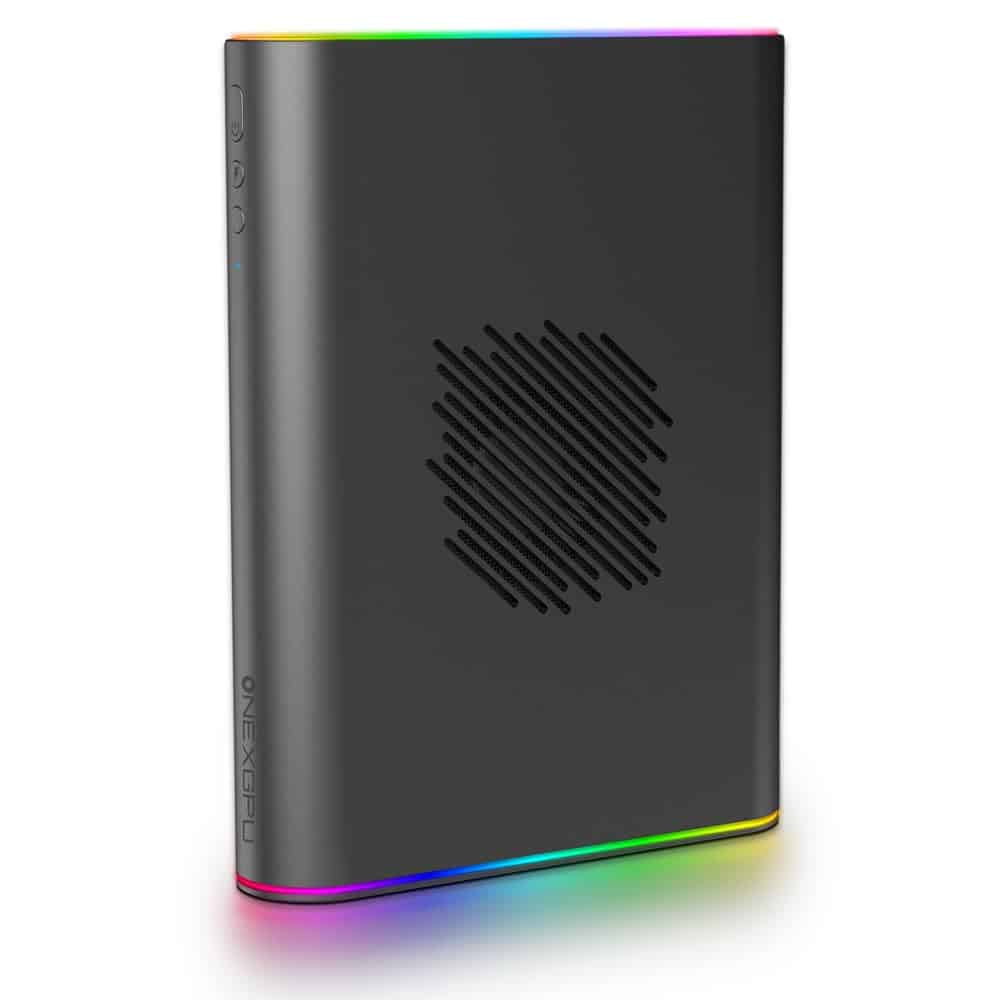
We recommend the ONE XPLAYER External GPU for its powerful performance and versatility across multiple devices.
Pros
- High-performance AMD Radeon RX 7800M XT graphics
- Compatible with various devices and ports
- Includes additional storage and connectivity options
Cons
- Fan noise can be noticeable
- Limited availability as a new product
- Higher price point compared to some alternatives
The ONE XPLAYER External GPU impressed us with its robust performance. We connected it to different devices, including laptops and handheld consoles, and saw significant improvements in graphics capabilities. The AMD Radeon RX 7800M XT chip delivered smooth gameplay even in demanding titles.
We appreciated the flexibility this eGPU offers. It worked seamlessly with Thunderbolt 3/4, USB 4, and OCuLink ports on various devices. The additional 4TB SSD expansion slot and extra USB ports proved handy for increasing storage and connecting peripherals.
The build quality stood out to us. The aluminum alloy enclosure felt sturdy yet remained surprisingly lightweight at just 1.56kg. This made it easy to transport between setups. The included 330W GaN charger was a nice touch, allowing us to power both the GPU and our laptop simultaneously.
During intense gaming sessions, we noticed the fan noise became more prominent. While not a deal-breaker, it’s worth considering if you’re sensitive to sound. The turbo button let us quickly switch between 130W and 180W TDP settings, giving us extra performance when needed.
Multiple display outputs expanded our setup options. We successfully ran a four-monitor configuration using the HDMI and DisplayPort connections. This feature will appeal to productivity users as well as gamers.
Buying Guide
When selecting an external graphics card, we recommend considering several key factors. Performance is crucial, so we suggest looking at the GPU model and its benchmarks. Memory capacity and type also play a significant role in gaming and professional applications.
Compatibility is another vital aspect. We advise checking the following:
- Thunderbolt 3 or 4 port availability on your laptop
- Power supply requirements
- Physical size constraints
Here’s a quick comparison of important features:
| Feature | Entry-level | Mid-range | High-end |
|---|---|---|---|
| GPU | Basic | Advanced | Top-tier |
| Memory | 4-6 GB | 8-12 GB | 16+ GB |
| Power | 300-450W | 500-650W | 700W+ |
We find that cooling solutions are often overlooked. Effective cooling ensures consistent performance and longevity. Look for units with multiple fans or liquid cooling for high-end options.
Portability might be a concern for some users. We suggest weighing the trade-offs between performance and size if you plan to move your setup frequently.
Lastly, we recommend considering future upgradability. Some enclosures allow for easy GPU swaps, which can extend the lifespan of your investment.
Other Options
WAVLINK Dual HDMI Adapter
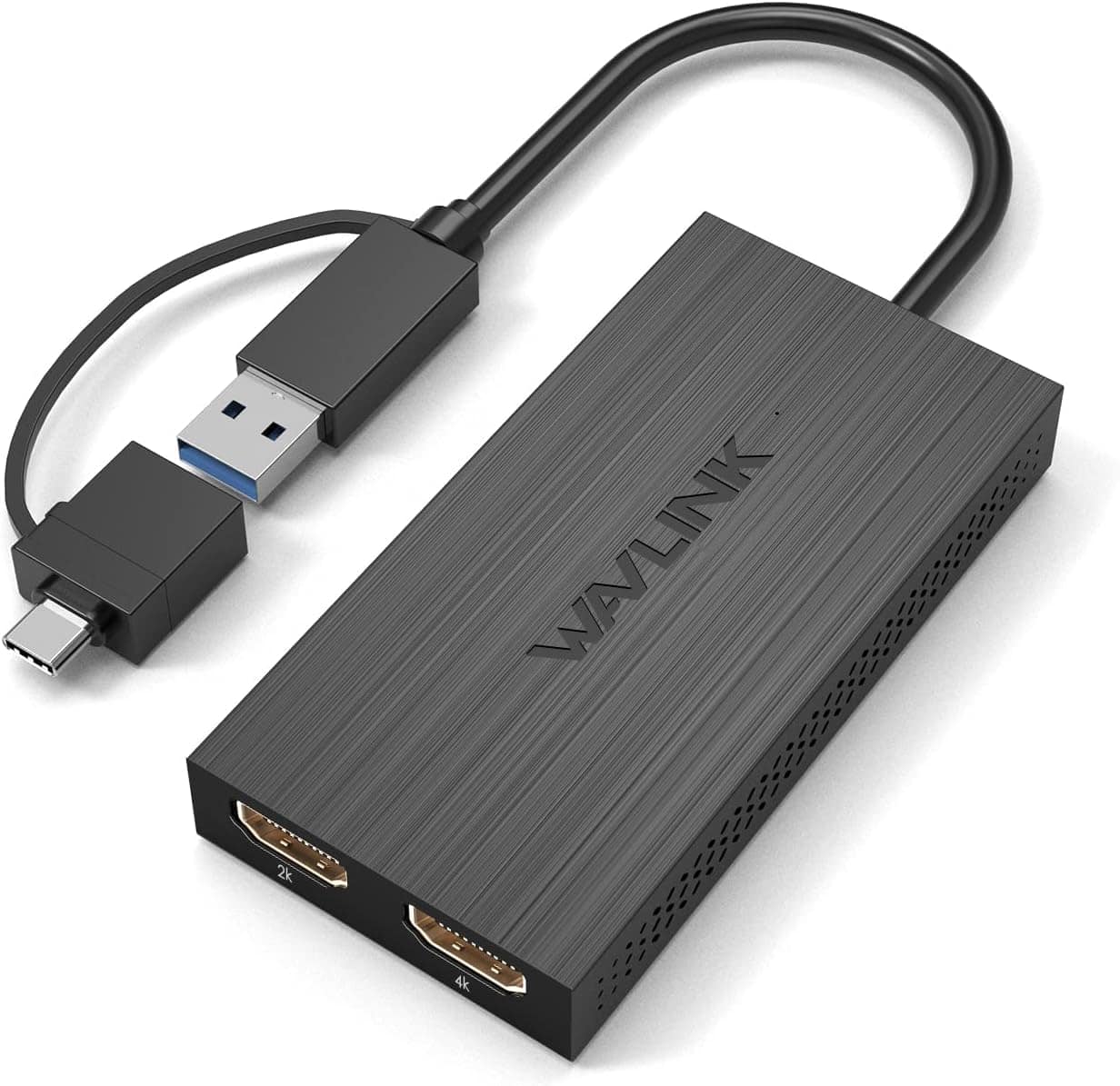
This versatile adapter offers an easy solution for extending your workspace across multiple displays.
Pros
- Supports dual monitors with a single connection
- Compatible with both USB-A and USB-C ports
- Easy setup for most Windows and Mac systems
Cons
- Not suitable for gaming or graphics-intensive tasks
- Doesn’t support HDCP content playback
- Requires driver installation
We found the WAVLINK Dual HDMI Adapter to be a handy tool for expanding screen real estate. It connects effortlessly to USB-C, USB-A, and Thunderbolt 3/4 ports, allowing us to mirror or extend our display across two monitors.
The adapter’s performance impressed us for everyday tasks. We easily set up spreadsheets on one screen while drafting emails on another, significantly boosting our productivity. The 1080p@60Hz resolution provided clear, crisp visuals for our work.
We must note that this adapter isn’t designed for gaming or graphic design. During our tests, we noticed some lag when attempting to run video games across the extended displays. For web browsing, document editing, and general multitasking, though, it performed admirably.
WAVLINK USB-to-HDMI Adapter
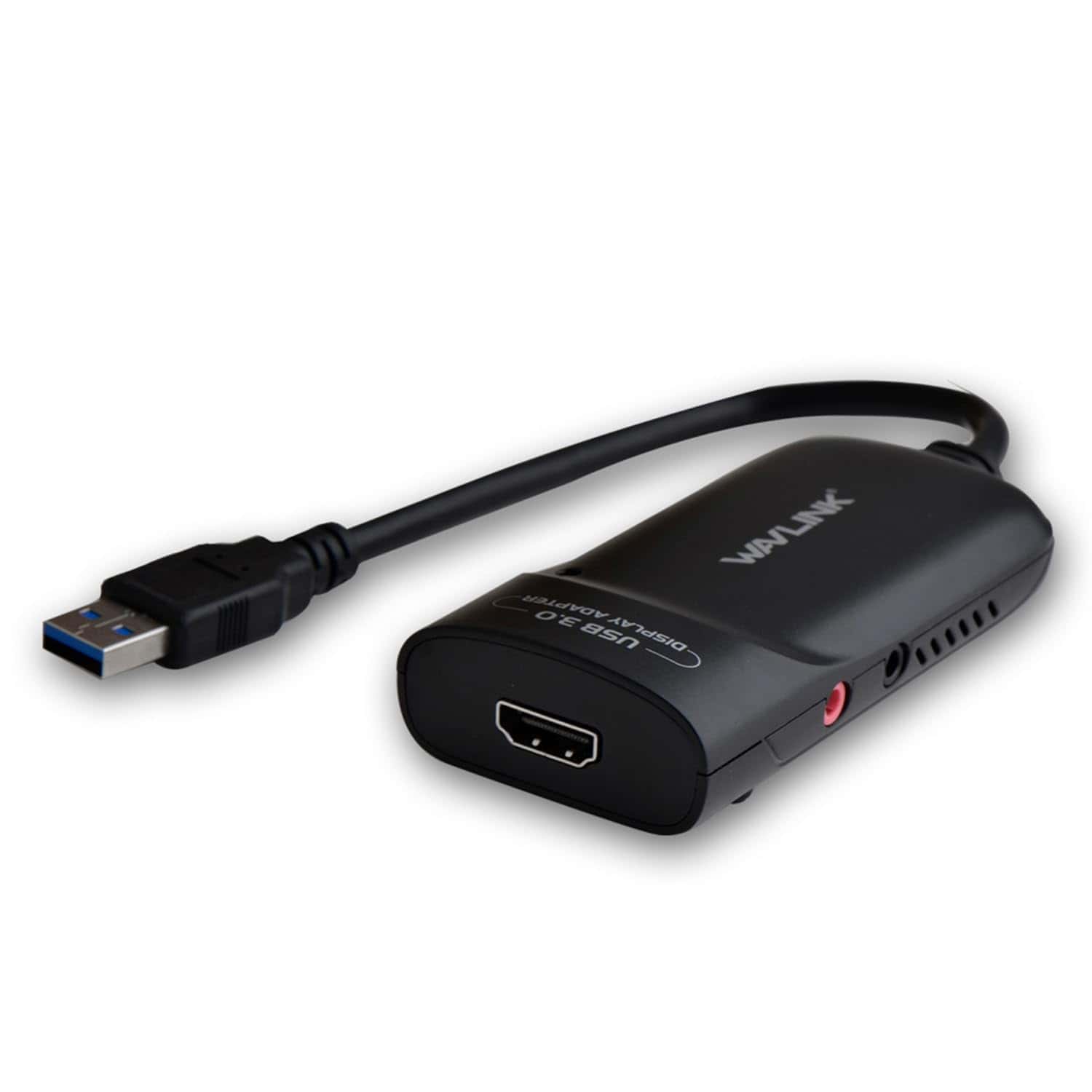
We recommend this adapter for users seeking an easy way to add extra displays to their setup.
Pros
- Supports up to 6 monitors
- Compatible with multiple operating systems
- Includes audio ports
Cons
- May cause boot issues on some systems
- Limited to 2K resolution
- Requires driver installation
We tested the WAVLINK USB-to-HDMI adapter and found it to be a useful tool for expanding display options. The device plugs into a USB 3.0 port and provides an HDMI output, allowing us to add an extra monitor to our setup with ease.
The adapter’s compatibility impressed us. It works with Windows, macOS, Chrome OS, and even some Android devices. We successfully used it on an older laptop running Windows 10 and a newer MacBook with no issues. The plug-and-play nature made setup quick, though we did need to install drivers from the included CD.
One feature we particularly liked was the built-in audio ports. Having a separate microphone input and headphone output on the adapter itself proved convenient, eliminating the need for additional dongles or splitters.
While using the adapter, we noticed it supports resolutions up to 2048×1152 at 60Hz. This 2K output looked crisp on our test monitors, though users with 4K displays may find it limiting. The DisplayLink technology worked smoothly, with no noticeable lag during regular use.
We did encounter a minor hiccup during testing. On one system, the computer failed to boot properly when the adapter was plugged in. Unplugging it allowed for a normal startup, after which we could reconnect the adapter without issues. This may be a concern for users who prefer to leave peripherals connected at all times.
The adapter’s build quality feels solid, and its compact size makes it easy to carry in a laptop bag. We appreciate the 24-month warranty, which provides peace of mind for long-term use. Overall, this WAVLINK adapter offers a straightforward solution for adding extra displays to various devices.
StarTech USB 3.0 Quad HDMI Adapter
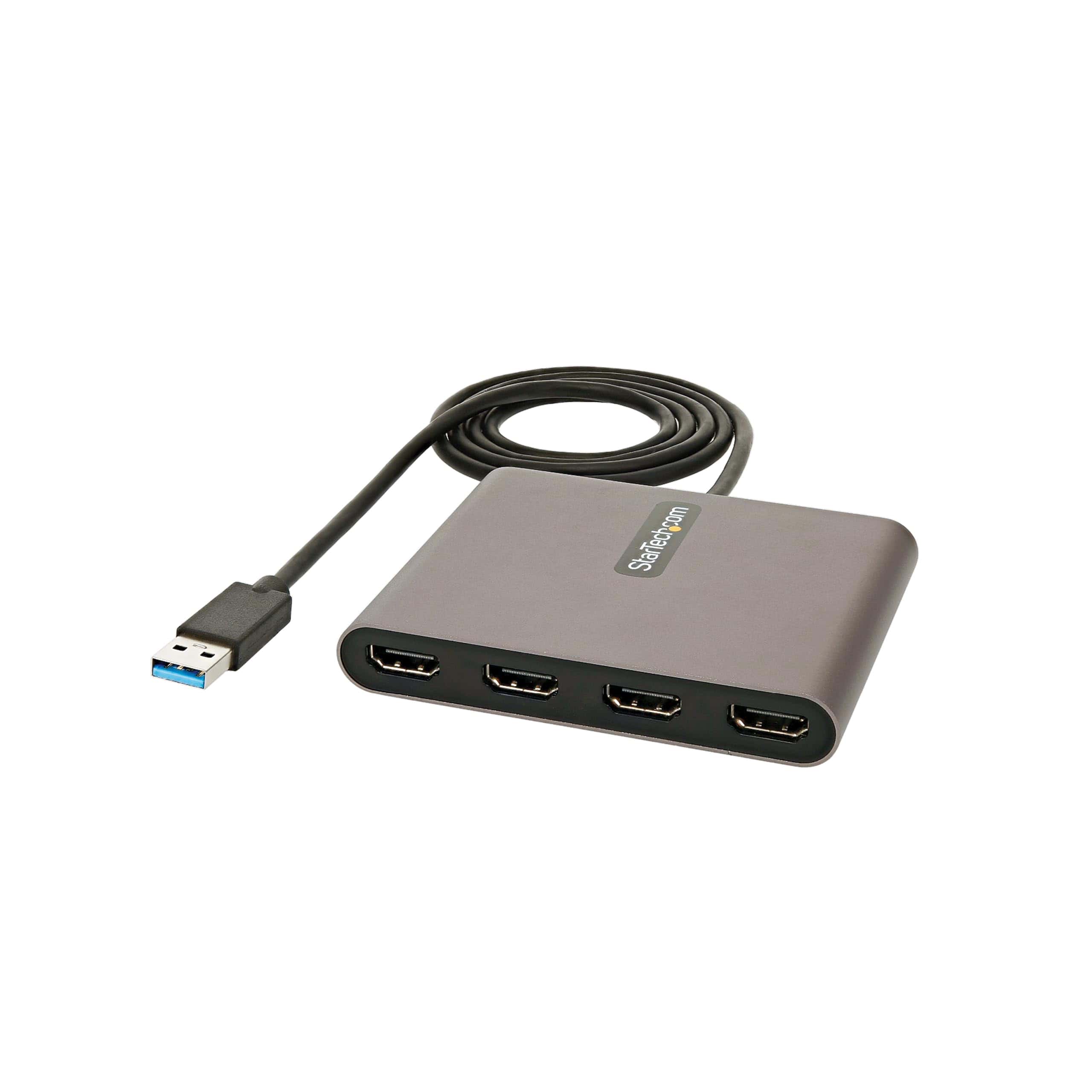
We recommend this adapter for Windows users seeking to expand their display setup with multiple monitors.
Pros
- Supports up to four HDMI monitors
- Easy setup with plug-and-play functionality
- Includes productivity-enhancing software
Cons
- Not compatible with macOS, ChromeOS, or Linux
- May run hot during extended use
- Limited to 1080p resolution at 60Hz
We tested the StarTech USB 3.0 Quad HDMI Adapter and found it to be a solid solution for expanding a Windows desktop. The device connected seamlessly to our laptop, allowing us to add four extra 1080p displays without hassle.
The included software proved helpful for managing multiple windows across screens. We appreciated the drag-and-drop functionality and the ability to zoom and scale content easily. This feature significantly boosted our productivity when working with multiple applications.
One drawback we noticed was the adapter’s tendency to heat up during extended use. We suggest placing it in a well-ventilated area to ensure optimal performance. Additionally, users should note that while the adapter supports 1080p at 60Hz, it doesn’t offer higher resolutions for those seeking 4K displays.
Beelink External GPU Dock
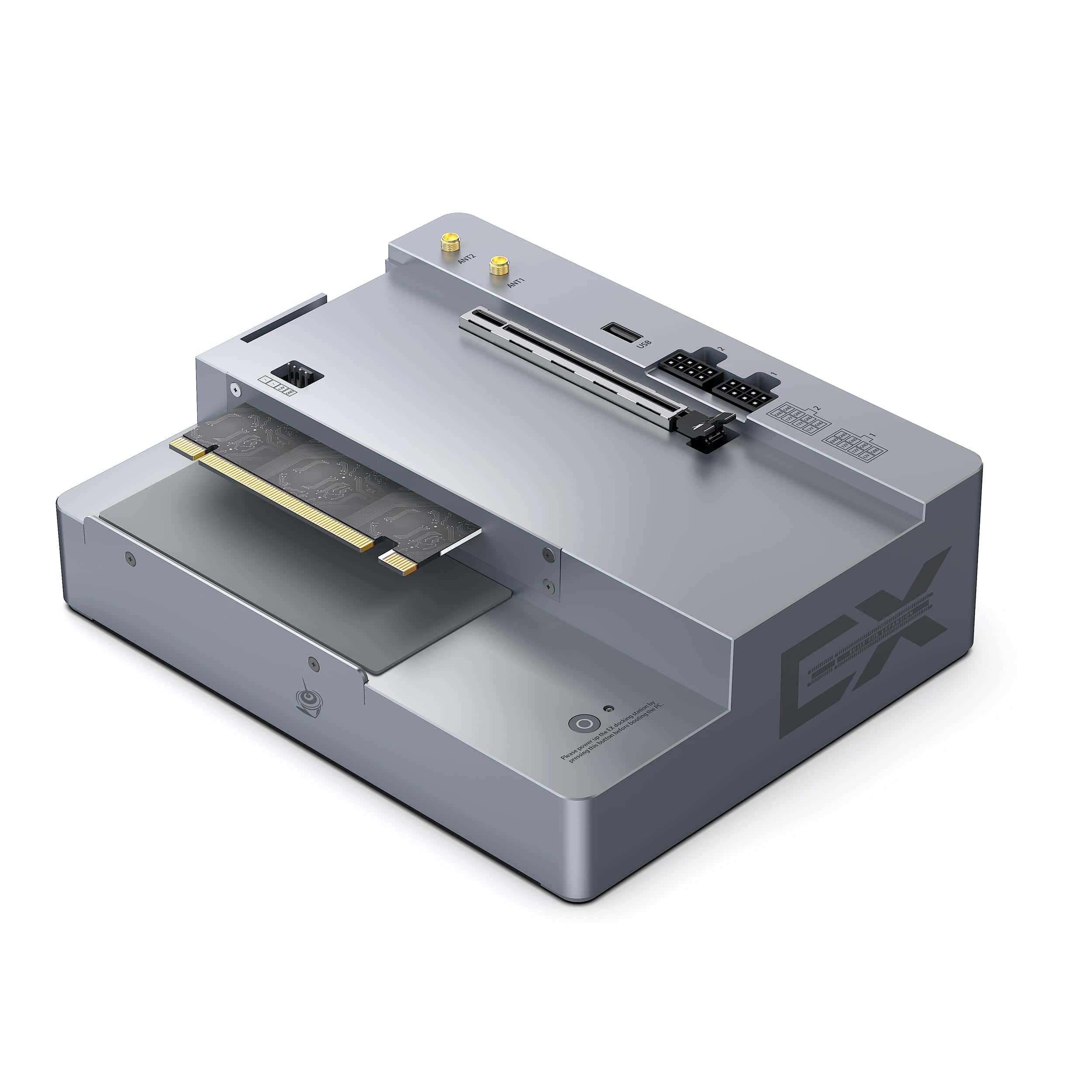
We recommend this external GPU dock for Beelink mini PC owners seeking a significant performance boost for gaming and professional tasks.
Pros
- Supports high-end graphics cards up to RTX 4090
- Built-in 600W power supply
- Includes SSD and Wi-Fi modules
Cons
- Only compatible with specific Beelink models
- Requires careful installation
- Bulky size compared to mini PCs
We’ve tested the Beelink External GPU Docking Station, and it’s an impressive piece of hardware. The PCIe x16 slot ensures full performance for graphics cards up to the RTX 4080, with minimal loss for even more powerful GPUs.
The built-in 600W power supply is a standout feature. It provides ample power for the most demanding graphics cards on the market. We appreciate the inclusion of SSD and Wi-Fi modules, which enhance the overall functionality of the dock.
Compatibility is limited to specific Beelink models like the GTI14 Ultra and GTI12 Ultra. This restriction may disappoint some users, but it allows for optimized performance with supported systems. The installation process requires care and attention to detail. We recommend following the instructions closely to avoid any issues.

